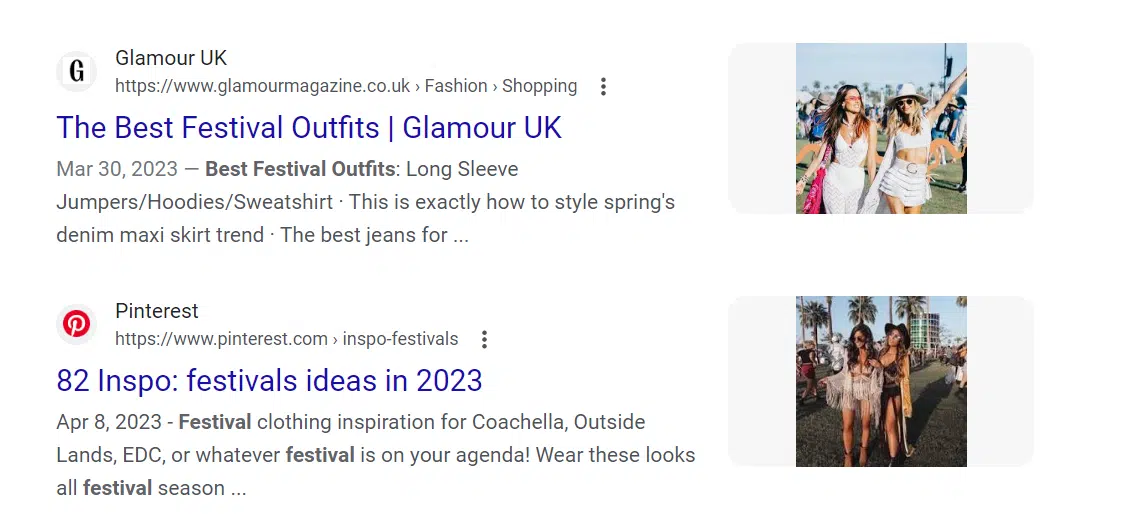4 performance PR secrets to boost your search visibility
These PR trade tips can help your brand land big placements and reap valuable search discovery and revenue benefits.
Most SEOs are familiar with the monumental challenge of achieving visibility for competitive keywords.
Google’s Page 1 is often dominated by content from major publishers in the form of bylines and listicles about the best offerings on the {keyword} market.
You can’t expect to beat Conde Nast, Wirecutter, CNET, et al.
So how do you join them and leverage the power of those platforms to get your brand some high-powered visibility and third-party credibility?
This article tackles performance PR trade tips that can give you a hand in landing big placements and reaping discovery and revenue benefits.
1. Media partners love competitive keyword intel
If you want to be a good partner to your media publisher network (which is a good idea for helping you get steady placement opportunities), don’t be afraid to share data you see on trends.
Our team does significant research to help surface emerging trends for our media partners that will also provide opportunities for our brands.
For instance, in the early days of COVID-19, we helped get a fitness brand some great placements by letting our media partners know we saw a spike in demand for “at-home fitness equipment” and related keywords.
Every quarter, we work closely with our brands, our SEO team, and the aforementioned trend resources to develop a new list of keywords in focus.
We relay those to our top media partners and make suggestions for relevant product placements (and proactive commission structures).
More often than not, those recommendations help us get our brands included.
Remember, media publishing is as competitive as any other industry, so you’ll tend to reap the benefits of giving your partners intel that will give them a leg up.
2. Evergreen content is most of the performance PR game – except for hot trends
While trend recognition represents a great opportunity for brands and publishers alike, it’s not where you’ll find the bulk of your results from performance PR.
Typically, our publisher partners will share six-month editorial calendars centered around seasonality and key holidays (e.g., best Memorial Day grill specials, most romantic gifts for Valentine’s Day).
Those articles are generally evergreen, long-term SEO anchors, meaning the title and boilerplate copy remain the same. They’re simply updated every year, often keeping the same brand list and refreshing the offers and products.
This makes the bar for inclusion extremely high. A successful placement could last for years.
When you pitch for inclusion here, ensure you’re putting your best foot forward: top-selling, ultra-relevant SKUs and aggressive commission structures.
Along with the tried-and-true evergreen content, there can be room to integrate themes into holiday content.
For instance, COVID-era Valentine’s Day content played into the trends of the day, like home cooking and cocktails, which gave liquor brands and meal kits time in the sun.
Outside the holiday mileposts, there’s always room for other adjustments as trends emerge.
Recently, we researched and found out that festival and concert outfits (for Coachella, Taylor Swift concerts, etc.) were trending. We dug into our brand catalogs and selected glittery, flashy, fun SKUs to fit that trend.
Sure enough, the combination of trend data, relevant SKUs, and proactive commission structures led to placements on high-ranking listicles like the following (note the original Pinterest inspiration as well):

3. More ways to purchase are better for media partners
Brands and publishers do have some competing interests to be aware of.
One frequent sticking point is that brands would prefer publishers to point exclusively to their sites for purchasing options, while publishers almost always provide multiple options for purchase.
No, it’s not ideal for a brand’s Amazon listing to be cited alongside their website.
Still, we’ve heard directly from publishers that Google tends to favor articles with multiple paths to purchase, so they favor the same setup.
If the choice is between multiple and no listings, we always recommend our brands go with the flow.
4. Placements can go (far) beyond the SERP
It’s easy to think of SEO in a bit of a vacuum, but remember: consumers engage with media platforms outside of keyword searches.
Social media repurposing – featuring the brand in things like Reels and Stories – represents more incremental placements to access with performance PR. Your team should make sure to understand their placement options.
Of course, you’ll still pay a commission for sales garnered through those listings. But even the most standout SEO teams won’t be able to deliver the organic impact of holistic performance PR campaigns.
Using performance PR to drive brand discovery and visibility
Combining volume, audience, and trusted third-party credibility creates a huge opportunity for brand/product discovery and instant revenue.
Given a commission structure that works for your brand’s business model, performance PR represents a highly impactful option to help your brand reach aggressive growth goals – if you know how to build the relationships that open content doors.
Opinions expressed in this article are those of the guest author and not necessarily Search Engine Land. Staff authors are listed here.
Related stories